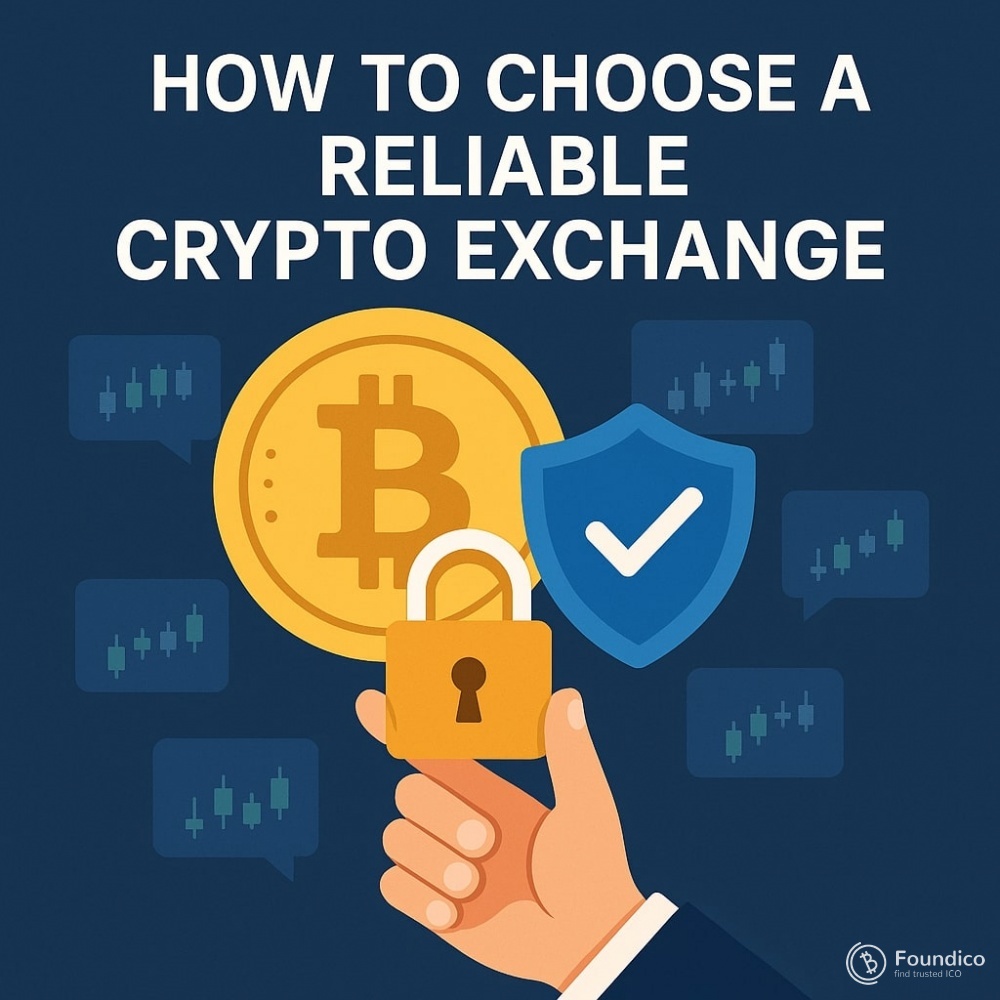How to Choose a Reliable Crypto Exchange

By Dr. Pooyan Ghamari, Swiss Economist and Visionary
The rapid rise of digital assets has made cryptocurrency exchanges the backbone of the modern financial ecosystem. They serve as gateways for investors, traders, and institutions to enter the crypto world. Yet, as opportunities grow, so do the risks. Not all exchanges are created equal, and choosing the right one can make the difference between safeguarding your assets and facing devastating losses.
In this article, I will outline key factors to consider when selecting a reliable crypto exchange. These guidelines stem not only from economic analysis but also from my vision of creating a safer, more transparent, and sustainable global digital economy.
1. Regulatory Compliance
The first sign of a trustworthy exchange is its alignment with financial regulations. While cryptocurrency was initially celebrated for its decentralized nature, regulation has become essential for legitimacy and investor protection.
-
Ensure the exchange is licensed or registered in reputable jurisdictions.
-
Review its compliance with anti-money laundering (AML) and know-your-customer (KYC) procedures.
-
Exchanges operating in regulatory “grey zones” may offer lower fees, but they also expose users to higher risks.
A compliant exchange signals stability and reduces the likelihood of sudden shutdowns or conflicts with authorities.
2. Security Measures
In an industry where billions of dollars have been lost to cyberattacks, robust security should be non-negotiable. Look for exchanges that prioritize the following:
-
Cold storage for the majority of customer funds.
-
Multi-signature wallets to prevent single-point failures.
-
Two-factor authentication (2FA) for user accounts.
-
Insurance policies against theft or hacking incidents.
As I often emphasize in my economic research, trust is the currency of the digital age. Without strong security, even the most popular exchanges can collapse.
3. Liquidity and Trading Volume
Liquidity is the lifeblood of any exchange. High liquidity ensures that you can buy or sell assets quickly without significant price slippage.
-
Check trading volume across major pairs like BTC/USDT or ETH/USD.
-
Compare order book depth and spreads with other exchanges.
-
Favor platforms with a strong user base and institutional participation.
A liquid exchange not only enables smoother transactions but also reflects investor confidence.
4. Transparency and Reputation
A reliable crypto exchange values transparency. Before committing, research:
-
Leadership team: Is the management public and accountable, or hidden behind anonymity?
-
Proof of reserves: Does the exchange provide regular audits to confirm solvency?
-
Community reputation: What are users saying on independent forums and review sites?
In my vision for the global digital economy, transparency forms the foundation of sustainable growth. An opaque exchange, no matter how attractive its features, poses long-term risks.
5. User Experience and Accessibility
A reliable exchange balances security with usability. Key aspects include:
-
Ease of use: An intuitive interface benefits both beginners and professionals.
-
Mobile access: A seamless app for on-the-go trading.
-
Customer support: 24/7 assistance, ideally with live chat or multilingual services.
-
Educational resources: Guides and insights to help users make informed decisions.
An exchange that values user empowerment ultimately contributes to the stability of the crypto ecosystem.
6. Range of Assets and Services
Beyond Bitcoin and Ethereum, a strong exchange offers a curated yet diverse selection of cryptocurrencies. However, more isn’t always better—quality over quantity matters.
-
Avoid exchanges that list too many unvetted “altcoins.”
-
Look for additional services such as staking, futures, or fiat gateways.
-
Check whether the exchange integrates with decentralized finance (DeFi) protocols or NFT marketplaces.
The breadth of services reflects the exchange’s vision for innovation and adaptability in a rapidly evolving industry.
7. Cost Structure
Trading fees, withdrawal charges, and hidden costs can erode profits. Analyze the exchange’s fee structure carefully:
-
Transparent fee schedules are a good sign.
-
Consider both maker and taker fees.
-
Evaluate hidden costs like high withdrawal fees or premium spreads.
The most reliable exchanges strike a balance between fair pricing and quality services.
Choosing a reliable crypto exchange is one of the most critical decisions any investor can make in today’s digital economy. It requires a thoughtful balance between security, compliance, liquidity, and user experience.
As a Swiss Economist and Visionary, I believe the future of finance rests on exchanges that foster trust, transparency, and long-term stability. By applying careful judgment and due diligence, investors not only protect their assets but also contribute to building a stronger global crypto ecosystem.

 Maxi Doge - $MAXI is the meme-powered token of Maxi Doge—a body-building, 1000x-leverage-trading Doge who represents ultimate strength, hustle, and the grind of the bull market. He never skips leg day, a 1000x trade, and he definitely never touches grass.
Maxi Doge - $MAXI is the meme-powered token of Maxi Doge—a body-building, 1000x-leverage-trading Doge who represents ultimate strength, hustle, and the grind of the bull market. He never skips leg day, a 1000x trade, and he definitely never touches grass.